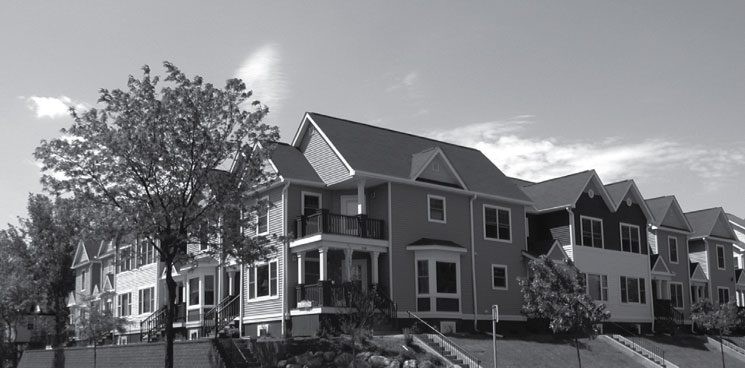The Case for B
Limited-equity housing cooperatives, some community land trusts, some deed-restricted housing programs, and some inclusionary-zoning ordinances are examples of programs that for decades now have been using Plan B to develop and steward an inventory of homes in their communities that continuously sell and resell at prices eligible households can actually afford.
Plan B’s strategy is to subsidize the development of affordably priced homes by nonprofit, community-based organizations. This enables the community-based organization to sell homes for less than they cost to develop (or acquire from another developer).
Plan B’s housing organizations don’t just build and run. They think allocating ever-increasing amounts of public and private subsidy to combat a plentiful and growing supply of unaffordable housing doesn’t constitute much of a plan. In exchange for subsidy that supports its housing development activity, the community-based organization — as part of its mission — stays connected to each home it develops to ensure that every sale, not just the first one, occurs at an affordable price.
As for Plan B’s homebuyers, they agree to pass the same deal they get — i.e., an affordable purchase price, opportunity to begin building wealth, and facilitated access to mortgage financing on favorable terms — on to other eligible homebuyers.
What a concept! Imagine simple purchase options from homeowners to nonprofit, community-based organizations that are managing waiting lists of credit-worthy, mortgage-ready households eager to stop renting. That pretty much cuts through the Gordian knot of legal, marketing, financing, policy, and program-administration issues faced by affordable-ownership housing professionals every day.
In the best Plan B programs, eligible households are invited to participate in the development (and periodically review the performance) of the formula that determines the price at which homes in their price-stabilized marketplace will sell. It’s not surprising, then, that such formula-determined prices are not only reliably affordable (if you were able to set the price, would you make it unaffordable?) but also provide eligible households with a real opportunity to accumulate wealth (would you set yourself up to lose money?).
Counting units is not a good or even useful element of comparison when measuring the effectiveness of these strategies against the affordable-ownership housing objective. Counting the number of affordable transactions, however, effectively quantifies the number of households benefiting under either plan. The affordable-transaction totals for both plans will always include any newly developed homeownership opportunities, but Plan B’s totals will also include resales of the price-stabilized homes in its existing inventory. For the same money, the typical Plan B transaction will always serve more households (85 more in this instance) than the typical Plan A transaction.
If Plan B is so much better, why isn’t it Plan A?
Perhaps the biggest barrier to a clear-eyed assessment of Plan A vs. Plan B among housing professionals is our failure to connect with the priorities of typical American households. Ask 100 of your affordable-ownership housing colleagues what “affordable housing” means, and you will likely get 75 responses that go something like this: “Housing is affordable if it consumes no more than a certain percentage (typically 30 percent) of the gross monthly income of a household of a certain size earning a certain percentage (typically 80 percent) of the median income that is earned by households of the same size living in the standard metropolitan statistical area or the standard non-metropolitan statistical area or, if neither, then the county in which the dwelling unit is situated.” The other 25 responses you get are likely to be more complicated, start with “It depends,” include a probing look …and have something to do with the IRS tax code.
Ask the person on the street what “affordable housing” means, and most of the time you are likely to hear something like this: “Housing is affordable if it sells for a price I can afford.” The rest of the time you will be listening to someone who has been duped by us and our colleagues in the for-profit housing industry into believing that “affordable housing” and “affordable housing payments” are the same thing.
Because an affordable-payment mindset dominates the nation’s affordable-housing policies and programs (not to mention its car lots), the policy underpinnings and programmatic tools of Plan A are routinely superimposed on virtually every effort to even imagine Plan B at scale — let alone implement it. For Plan B to thrive, we need the ability to think outside the Plan A toolbox. Plan B programs require a different set of tools altogether — think metric vs. standard.





I just completed a relative analysis of foretasted Plan A and Plan B outcomes over a 25-year period in a theoretical jurisdiction using characteristic transaction details for each plan based on standard housing-development and affordability factors faced by communities everywhere.
—————————————————————————————————-
Hg Mould Spray ::